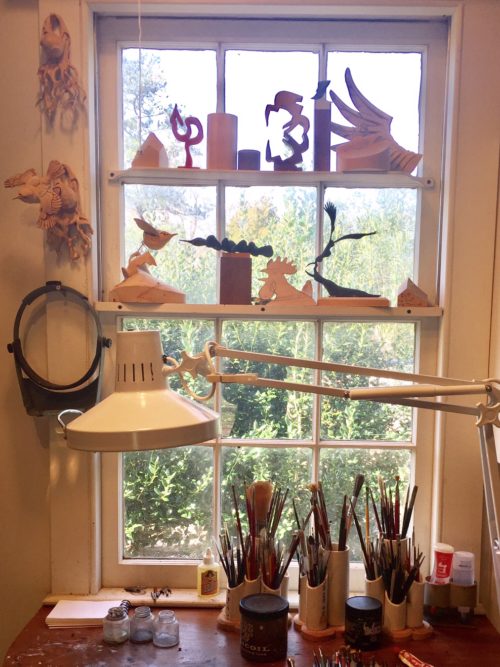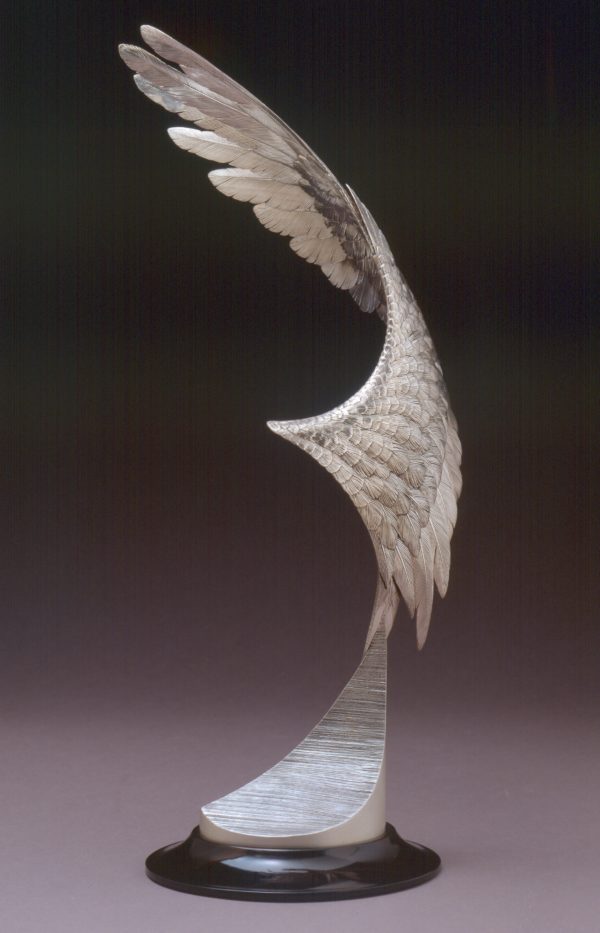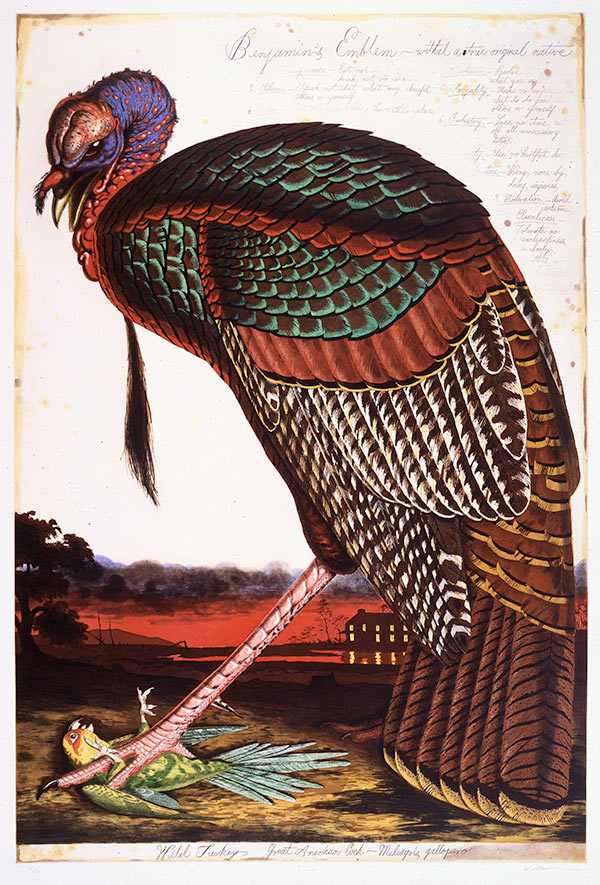Wild hogs, Walker hounds, and birds of many different feathers will inhabit our upcoming exhibition Out of the Wild: Animals in Contemporary Art. Inspired by objects in the Gibbes permanent collection and several local private collections, this exhibition showcases paintings and sculpture by three American artists—William Dunlap, Walton Ford, and Grainger McKoy—who regularly employ animal imagery in their work.

Birds, in particular, play a starring role in the exhibition. In February, I had the pleasure of visiting sculptor Grainger McKoy at his studio near Sumter, South Carolina. McKoy has been fascinated with birds since his youth; and, though he began his studies at Clemson University in the architecture school, he soon changed his major to zoology. He uses his background in both subjects to produce carvings and cast sculptures that capture the glory of bird life. His studio is filled with tiny rough-cut wooden models that represent ideas for his next sculptural undertaking.

All of McKoy’s sculptures start with a basswood carving. His complex compositions require that each feather is carved and painted individually. Although nearly hyper-realistic in detail, his bird sculptures are also abstract in their depiction of motion. McKoy’s Black Skimmer exemplifies this attention to realistic precision and use of abstract space. Like a scientist, McKoy carefully observes the habits of his subjects. Skimmers fly along the surface of lakes and rivers and trail their beaks in the water to capture small fish. To represent this contact with the water, the precisely carved and painted bird meets its own reflection in a more abstractly carved black walnut (see title image, above).

Birds are often the primary subject in Walton Ford’s work as well. His richly rendered prints mimic the style of artist-naturalist John James Audubon, yet are laced with satirical critiques of history and politics. Ford imitates Audubon’s penchant for penciling notes on his paintings and inscribes his dramatic prints with cryptic texts that signal underlying narratives. Six of Ford’s provocative bird prints will be featured in Out of the Wild.
—Sara Arnold, curator of collections, Gibbes Museum of Art
Top image: Black Skimmer, 1983, by Grainger McKoy (American, b. 1947); Basswood, walnut, polychrome, and oil; 24 1/4, 29 3/4, 24 3/4 inches; On loan courtesy of The Rivers Collection.
Published May 4, 2017

